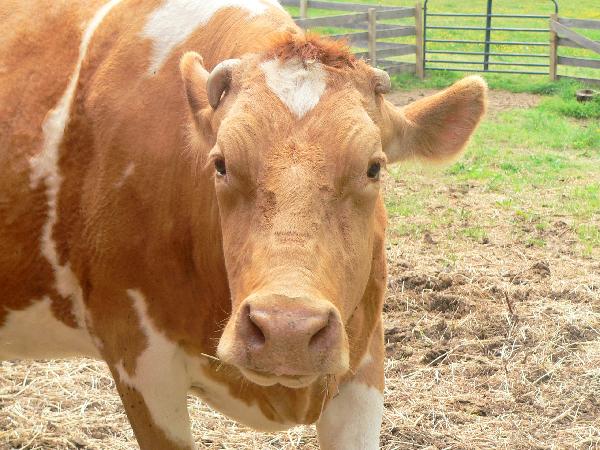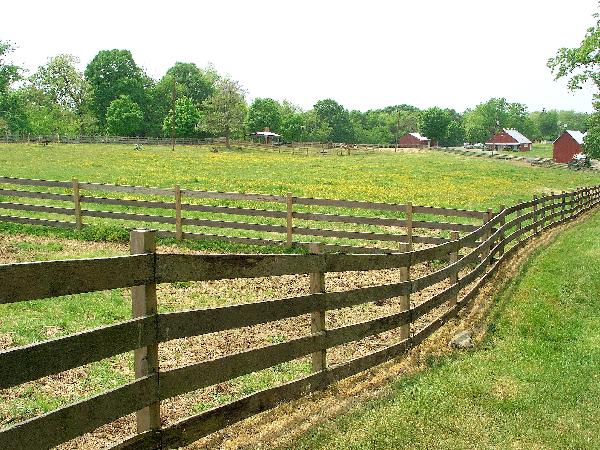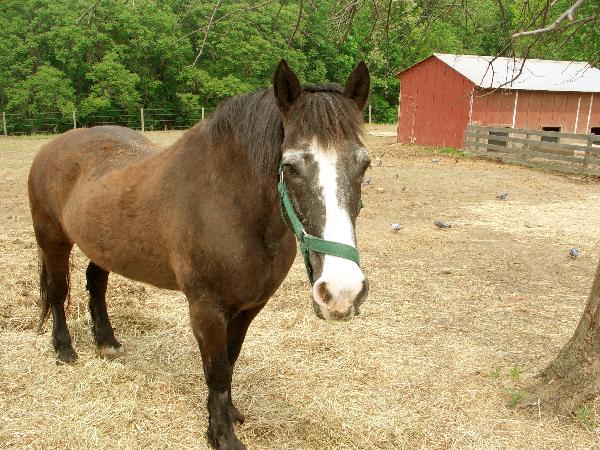NPS Website; Local Website
 WHAT IS IT?
WHAT IS IT?An NPS-operated working farm replete with red barns, silos, John Deere tractors, cattle, hogs and draught horses. The farm’s most remarkable characteristic is its location, a narrow swath in-between Interstate 295 and the DC Beltway in an otherwise decidedly urban setting.
BEAUTY (3/10)
Some people find beauty in plowed fields and fenced plots filled with chickens, winding paths leading up to boxy, porched farmhouses. For someone who has never seen a farm, we admit Oxon Hill could hold a certain kind of charm. But is the idea of farmland really such a fading memory as Oxon Hill implies?
HISTORICAL INTEREST (4/10)
In 1891, the United States Government purchased this land as a farm for the St. Elizabeth’s Hospital. It was given to the National Park Service in the 1960s and since 1967, Oxon Hill Farm has served as a functional farm, where city folk can come and experience the joys, or toils, depending on your inclination, of farm life for an afternoon. Its primary purpose today is to serve as an accessible window into a more rural way of life.
We learned nothing about St. Elizabeth’s during our visit from either Park displays or the Site materials provided. Further research taught us that the preeminent mental health reformer Dorothea Dix founded St. Elizabeth’s in 1855 as the Government Hospital for the Insane. It was the first and only federal mental facility with a national scope.
Because of our current line of work, the history of St. Elizabeth’s is much more interesting than the farm that formerly served as “therapy” and sustenance for its patients.
CROWDS (6/10)
We arrived after the last wagon ride of the day. We were the only visitors to the Farm, although some local workers were enjoying an afternoon beer at the Site’s shady picnic area.
EASE OF USE/ACCESS (4/5)
The Oxon Hill Farm is located alongside the Potomac, directly across the River from Alexandria, Va. via the DC Beltway’s (I-95, I-495) always crowded Woodrow Wilson Memorial (Draw) Bridge. To get to the farm’s parking lot, take exit 3A and bear right onto Oxon Hill Road. Keep your eyes open, you will need to make a quick right turn through orange cones into what seems like a construction zone.
There is no DC Metro access to the Site. The D14 Bus, which departs from the Southern Avenue Metro Station could drop you off on the Indian Head Highway; from there it would be a 1/4-mile walk to the entrance through heavy traffic, dust clouds and back-hoes. Driving is wildly preferred to the mass transit option.
CONCESSIONS/BOOKSTORE (3/5)
The Visitor Barn and Bookshop bears a striking resemblance to Michael’s mom’s old kindergarten classroom. Learning stations, exhibits, reading and video watching areas fill the barn. The bookstore selection is definitely geared toward school groups and roaming students with pockets full of allowances. Nick knacks to remember one’s day at the farm and children’s books abound.
 COSTS (5/5)
COSTS (5/5)Park entry is free as, presumably, are the daily (1:30pm) wagon rides that circle the grounds.
RANGER/GUIDE TO TOURIST RATIO (3/5)
We luckily ran into the one Ranger on duty just as he was hopping into his pick-up truck. He unlocked the Visitor Barn for us and lingered, a little impatiently, as we took a look around. Given its claim as a working farm that represents a time “when horsepower still came from horses,” we are guessing that Rangers at Oxon Hill Farm spend more time tending to the animals than visitors.
TOURS/CLASSES (6/10)
To read the Park’s pamphlet, one gets the impression that Oxon Hill Farm is abuzz with activity from dawn to daybreak and that visitors could roll up their sleeves, jump right in and help the Rangers with their many, many farm duties. Life on the farm is hard work! That’s the message that Oxon Hill seems eager to impart.
Here’s the thing: we are having a very hard time believing that DC residents have never seen a farm and are completely ignorant of life beyond the Beltway. Oxon Hill positions itself as a foreign experience and this premise feels condescending.
To top it off, there was a whole lot of nothing happening during our afternoon visit. Things might be very, very different when a school group is let loose on the grounds. But on the day of our visit, construction crews on I-295 were the locus of action, not anything on the farm.
Gab is also disappointed that there is no mention of Oxon Hill Farm’s earlier existence as an adjunct part of St. Elizabeth’s Hospital in any of its materials. The history of mental institutions and the progress of the treatment of mental illness are fascinating topics. Discussion of this would have added depth and a bit more significance to the Farm as a NPS site
The founder of the American Red Cross, Clara Barton, has her own National Park Site, why doesn’t our country’s most prominent mental health advocate and reformer, Dorothea Dix, enjoy the same remembrance?
 FUN (5/10)
FUN (5/10)This isn’t to say we had a bad time at the Site. We were just unclear what we were supposed to be taking away from our visit. Oxon Hill Farm provided a quiet setting for a midday walk and all the animals were out. We spent our hour at the Site courting the ducks, getting the pigs and horses to look our way for photo opps and talking with the pregnant cow who looked like she was ready to burst at any second. Poor thing! The surroundings were quaint and we appreciated the momentary respite from traffic.
WOULD WE RECOMMEND? (3/10)
Oxon Hill Farm seems ready and able to handle large amounts of middle-schoolers, the presumed audience for the exhibits inside the Visitor Barn. We are guessing that this Site is a very popular field trip destination. There are plenty of learning opportunities at the Farm, just none geared towards anyone that can get into a PG-13 movie without an adult.
TOTAL 42/80
www.usa-c2c.com
© 2004-06